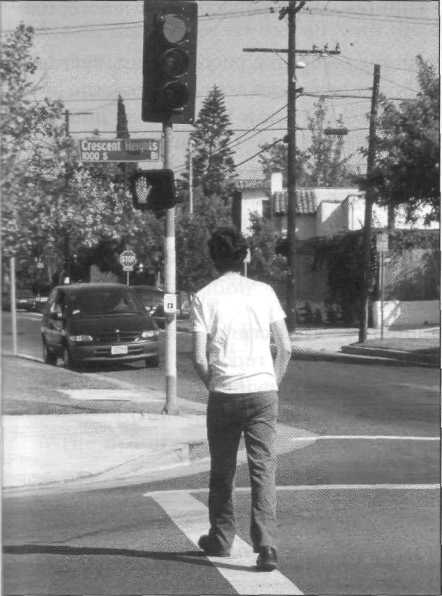Законодательная власть и правоохранительная деятельность в Великобритании и США учебное пособие Уровень В1 Составитель
 Скачать 3.57 Mb. Скачать 3.57 Mb.
|
| |||||||||||||||||||||||||||||||||||||||||||||||
| | Some behaviours that are generally considered normal, deviant, or criminal in most Western industrialized societies | ||
| Issue | Normal | Deviant but not criminal | Deviant and criminal |
| Use of the streets | Crossing the street at the traffic light | | Failing to stop after a traffic accident |
| Use of alcohol | Moderate social drinking | Alcohol abuse | |
| Making money | Earning a living as an adult | Begging on the streets | |
Source: Knox, 159. (adapted)
5. Think of another culture you know well. Would the behaviours in the table above be considered normal, deviant, or criminal in that culture?
THE SQR3 SYSTEM
| SQR3: Survey (S), Question (Q), Read, Recite, and Review (R3) Many books about studying at university recommend the SQR3 approach to reading. The SQR3 approach helps you become an active reader. Active readers do not simply pick up a text and read it. They do tasks before reading, while reading, and after reading. These tasks help them understand and remember what they have read. |
In this pre-reading activity, we will look at the first three steps in the SQR3 system: survey, question, and read.
1 Survey
Survey this text before reading it closely.
Look at the title, subheadings, boxed text, and pictures.
Skim through the text, reading the beginnings and ends of paragraphs.
Report back to the class on what you looked at and discovered.
2 Question
Before you read this text, think of questions that you expect the text will
answer. One trick is to look at the subheadings and key terms that you noticed in your survey and turn them into questions. For example, the subheading "Age group" might prompt the question, "Which age group is most likely to commit crimes?"
Write your questions in the margins.
Compare your questions with a small group.
3 Read
As you read, think about the questions you wrote in the margins.
See if you can answer your questions.

DEVIANCE AND CRIME
(
minor
someone too young to be legally considered an adult; punishments for minors are usually different than those for adults.
inor '
someone too ycuny he ae legally cons 3e*=c =r =7 punishment;:-' "o. bi usually diffe-;—. :-«r ca for adults
1) Have you ever . . .
crossed the street against the traffic light?
driven through a stop sign without stopping?
drunk or bought alcohol as a minor?
cheated on a test?
(2) If so, you have broken a socially accepted norm or practice, and you could therefore be considered deviant. Deviant behaviour is behaviour that is considered to be unacceptable, or outside the norms for that society.
 (
( This man has been arrested and charged with a crime. He is being searched for weapons before going to jail.
3) There are, of course, degrees of deviance and not every member of society will agree on what is deviant behaviour and what is normal behaviour. For example, while many people believe that prostitution is deviant, others see it as a legitimate way for people to earn a living. Also, what is seen as deviant behaviour will change over time and vary from place to place. Drinking alcohol, for example, has been regarded as deviant or as acceptable in the United States at different times in the past. In fact, in the 1920s, alcohol was considered to be so unacceptable in the U.S. that it was illegal to sell, buy, or consume it. Now drinking in moderation is accepted by the majority of the population as normal social behaviour for adults.
(4) What is considered to be deviant may also vary from culture to culture. In most cultures, but certainly not in all, it is regarded as deviant for a man to have more than one wife at the same time. However, there are some religious groups and cultures where polygamy is an accepted practice.
(5) Some acts of deviance may simply result in a person being regarded as odd or unusual, while other deviant behaviours actually break the law. These behaviours are seen as crimes.
WHO COMMITS CRIME?
(6) Reports on crime can't give us a complete picture of who commits crimes because not all crimes are reported. Furthermore, law enforcement agencies don't always share their information. However, available information on reported crimes can give us information about the people who commit crimes. If we consider all categories of crime together, the most likely people to commit crimes are young men from lower socioeconomic backgrounds.
Age group
(7) Young people have the highest rates of arrest for reported crime. Almost half of all people arrested are under the age of 25. Older people may gradually move away from crime or they may become skilled in not getting caught. Younger people are more likely to be involved in crime because they have fewer relationships that encourage them to follow conventional behaviour. A married person with two children and a steady job is less likely to commit a crime than an unemployed, single, child-free person.
Gender
(8) According to FBI (Federal Bureau of Investigation) reports, 78 percent of all those arrested for crimes are males. Females are arrested for criminal behaviour in only 21 percent of all arrests. (Percentages for males and females don't add up to 100 percent because of rounding of numbers.) Most women criminals are unemployed, uneducated, single mothers with small children.
(9) Why is it that the figures for males and females are so different? Sociologists suggest that it is more socially acceptable for males to be deviant and involved in crime than it is for females. Women are under a greater social pressure to conform than men are. If they do not conform to the expected social roles of wife and mother, they are more likely to be assigned extremely negative labels. It has also been suggested that women have fewer opportunities to get involved in criminal behaviour. Compared to males, potential female criminals are less likely to be selected and recruited into criminal groups, have a more limited range of criminal career paths open to them, and have fewer opportunities for learning criminal skills (Steffensmeier 1983). In other words, like employment opportunities, criminal opportunities are still much less available to women than to men. A further argument is that in a male-dominated society, women are socialized differently from men. Consequently, women are less interested in achieving material success and more interested in achieving emotional fulfilment through close personal relations with others. A drive for material success, it is argued, can lead people into crime if they lack other opportunities to gain such success.
Socioeconomic status
(
socioeconomic groups people grouped by sociologists according to social status, jobs, and amount of money earned
charged
officially accused of committing a crime
convicted
found guilty of committing a crime
10) The majority of those arrested are also from lower socioeconomic groups in the community. Without money, it is harder to keep out of trouble. You are more likely to do your gambling, for example, in a public place rather than in the safety of a suburban living room, and you cannot afford a private attorney to represent you if you do get caught. The poor are far more likely than the well-off to be arrested. If they are arrested, they are more likely to be charged. If they are charged, they are more likely to be convicted, and if they are convicted, they are more likely to be sentenced to prison (Reiman 1979).
After you read
1. USING THE SQR3 SYSTEM
The SQR3 system continues after reading a text. The fourth step is to recite, or say aloud from memory, and the last step is to review.
1 Recite
Look again at the subheadings in the text. Choose one. Re-read that section, and then give an oral summary of the main ideas to a partner.
2 Review
Go back and skim the text, placing a check (v) next to the parts of the text that you are sure that you understand and a question mark (?) next to those parts that are still unclear to you and that you need to study further.
Return to the sections of the text where you placed a question mark. Underline any difficult words in those sections. Try to figure out the meaning of the words from the surrounding context. Then check the dictionary.
Discuss with a small group any parts that you still do not understand.
2. Language focus
a. Find the following verb patterns in the text and complete the table.
| Verb patterns | Examples from the text |
| verb + infinitive (with to) verb + sb + infinitive (with to) adjective + infinitive preposition + -ing | |
b. Building vocabulary: Dealing with unknown words
| It is important to develop strategies for dealing with difficult or unfamiliar vocabulary in the texts you read. Strategies you might use are:
|
Find these words in the text. Discuss which strategies to use for each word, and write a brief definition next to each one.
| Word | Definition |
| consume (par. 3) | (v) eat or drink |
| moderation (par.3) | |
| polygamy (par.4) | |
| commit (par.6) | |
| conventional (par.7) | |
| conform (par.9) | |
| well-off (par.10) | |
| sentence (par.10) | |
Discuss the meanings of the words with your classmates. Compare the different strategies you used.
3. READING ACTIVELY
| Remember that when you read actively, you do not simply read to understand the words on the page. You think about how the ideas relate to what you already know, and you think about the implications of those ideas. |
Re-read paragraph 7, which is about youth crime. Write down any thoughts you have while you are reading the text. Discuss your thoughts with a small group.
/Adapted from Academic encounters: reading, study skills, and writing; Kristine Brown, Susan Hood/
Listening INTERVIEW WITH EVELINA AND ARPAD:
Crime in society today
| Here are some words and phrases from the interview with Evelina and Arpad printed in bold and given in the context in which you will hear them. They are followed by definitions. I've never actually been struck by crime: personally affected I see big groups of kids roaming the streets: walking around with no clear purpose if it's a rowdy teenage group: noisy, wild Guns might not be visible: able to be seen I've never seen anyone with a gun and much less seen a shooting: even less, certainly haven't |
| True/false questions check your understanding of a reading or listening passage. Read this list of strategies for answering them.
|
